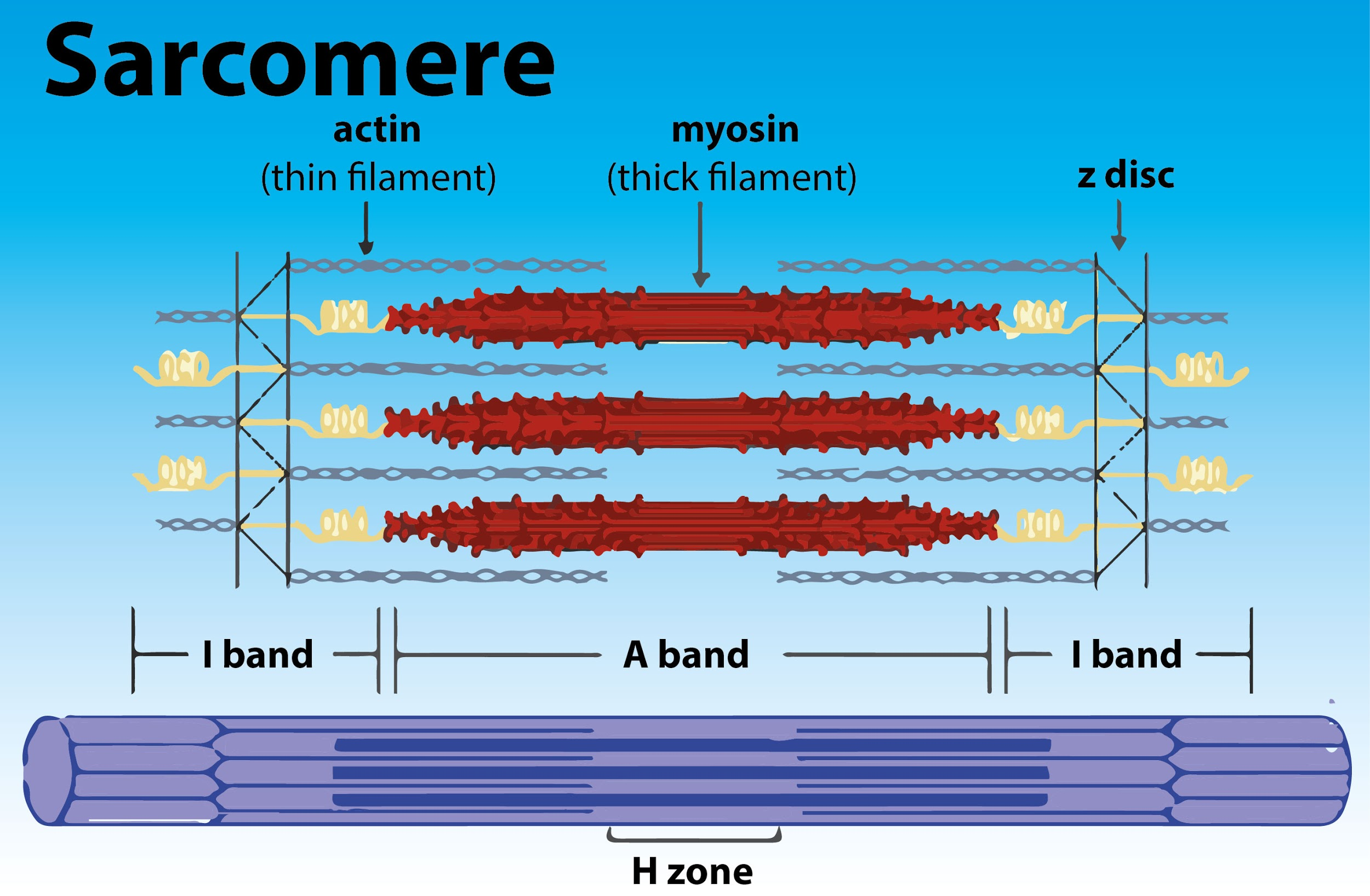
Draw the diagram of a sarcomere of skeletal muscle showing different regions.
Answer
577.5k+ views
Hint: Sarcomere is the essential unit of striated tissue in the muscles. This means that it is the most important entity that makes up our skeletal muscle. It forms the unit which repeats between two Z lines. By contracting in unison, sarcomeres can initiate broad, sweeping movement. Its special structure enables these tiny units to coordinate the contractions of our muscles.
Complete answer:

A sarcomere is defined as the myofibril area between two cytoskeletal structures called Z-discs (also known as Z-lines), and the striated appearance of skeletal muscle fibers is due to the arrangement of thick and thin myofilaments within each sarcomere. The dark striated band consists of thick filaments containing myosin, spanning the middle of the sarcomere toward the Z-disc. The thick filaments are anchored by a protein called myomesin at the center of the sarcomere (the M-line). The lighter I band regions contain thin actin filaments which a protein called α-actinin anchors at the Z-discs. The thin filaments extend into the M-line into the A band and overlap with thick filament regions. Owing to the thicker myosin filaments the A band is dark as well as contrast with the actin filaments. The H zone in the center of the A band is a little lighter in color, as the thin filaments do not reach into this area.
Note: Skeletal muscle is the type of muscle that starts all of our voluntary movement. Each skeletal muscle is an organ composed of different integrated tissues. These tissues include the muscle fibers of the body, blood vessels, nerve fibers, and connective tissue. Each skeletal muscle has three layers of connective tissue that enclose it, structure the muscle, and muscle fibers inside the muscle compartmentalize.
Complete answer:

A sarcomere is defined as the myofibril area between two cytoskeletal structures called Z-discs (also known as Z-lines), and the striated appearance of skeletal muscle fibers is due to the arrangement of thick and thin myofilaments within each sarcomere. The dark striated band consists of thick filaments containing myosin, spanning the middle of the sarcomere toward the Z-disc. The thick filaments are anchored by a protein called myomesin at the center of the sarcomere (the M-line). The lighter I band regions contain thin actin filaments which a protein called α-actinin anchors at the Z-discs. The thin filaments extend into the M-line into the A band and overlap with thick filament regions. Owing to the thicker myosin filaments the A band is dark as well as contrast with the actin filaments. The H zone in the center of the A band is a little lighter in color, as the thin filaments do not reach into this area.
Note: Skeletal muscle is the type of muscle that starts all of our voluntary movement. Each skeletal muscle is an organ composed of different integrated tissues. These tissues include the muscle fibers of the body, blood vessels, nerve fibers, and connective tissue. Each skeletal muscle has three layers of connective tissue that enclose it, structure the muscle, and muscle fibers inside the muscle compartmentalize.
Recently Updated Pages
Why are manures considered better than fertilizers class 11 biology CBSE

Find the coordinates of the midpoint of the line segment class 11 maths CBSE

Distinguish between static friction limiting friction class 11 physics CBSE

The Chairman of the constituent Assembly was A Jawaharlal class 11 social science CBSE

The first National Commission on Labour NCL submitted class 11 social science CBSE

Number of all subshell of n + l 7 is A 4 B 5 C 6 D class 11 chemistry CBSE

Trending doubts
10 examples of friction in our daily life

One Metric ton is equal to kg A 10000 B 1000 C 100 class 11 physics CBSE

Difference Between Prokaryotic Cells and Eukaryotic Cells

1 Quintal is equal to a 110 kg b 10 kg c 100kg d 1000 class 11 physics CBSE

State the laws of reflection of light

Explain zero factorial class 11 maths CBSE




